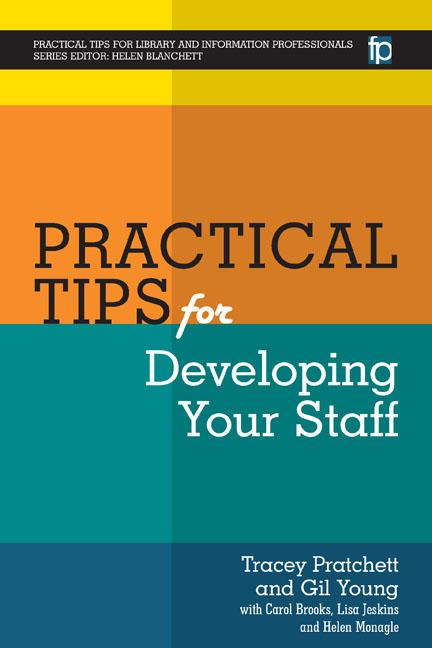Book contents
- Frontmatter
- Contents
- List of figures and tables
- Acknowledgements
- The authors
- List of abbreviations
- Series Editor's introduction
- Introduction
- Section 1 Theories
- Section 2 Infrastructure
- 11 Why develop staff?
- 12 Workforce planning
- 13 Job descriptions
- 14 Person specifications
- 15 Advertisements
- 16 Shortlisting
- 17 Interviews
- 18 Interviews – presentations and tests
- 19 Interviews – feedback
- 20 Inductions
- 21 Managing performance
- 22 Team development plans
- 23 Appraisals – preparing
- 24 Appraisals – conducting
- 25 Setting objectives
- 26 One-to-ones
- 27 Feedback – general
- 28 Team building
- 29 Team meetings
- 30 Sharing learning with the team
- 31 Writing references
- 32 Exit interviews
- 33 Effective handover
- Section 3 Activities and tools
- Index
25 - Setting objectives
from Section 2 - Infrastructure
Published online by Cambridge University Press: 09 June 2018
- Frontmatter
- Contents
- List of figures and tables
- Acknowledgements
- The authors
- List of abbreviations
- Series Editor's introduction
- Introduction
- Section 1 Theories
- Section 2 Infrastructure
- 11 Why develop staff?
- 12 Workforce planning
- 13 Job descriptions
- 14 Person specifications
- 15 Advertisements
- 16 Shortlisting
- 17 Interviews
- 18 Interviews – presentations and tests
- 19 Interviews – feedback
- 20 Inductions
- 21 Managing performance
- 22 Team development plans
- 23 Appraisals – preparing
- 24 Appraisals – conducting
- 25 Setting objectives
- 26 One-to-ones
- 27 Feedback – general
- 28 Team building
- 29 Team meetings
- 30 Sharing learning with the team
- 31 Writing references
- 32 Exit interviews
- 33 Effective handover
- Section 3 Activities and tools
- Index
Summary
MANAGERS AND TEAMleaders will be required to set objectives for individuals and teams within the LKS environment. If outcomes are not agreed and clearly defined from the outset, this can jeopardize the success of any project, whether large or small.
At the beginning of the project, even before any objectives are set, discuss with your team what the desired outcome will look like. This could be the development and delivery of a new training course, updating the LKS website or a reclassification project. Being really clear from the outset is integral to the success of any project.
I want all pages on the library website to be revamped with the new logo and the content to be updated.
I want you to develop a literature search training course for junior library staff and to deliver it on 12th April.
During the summer holidays we need to reclassify the business section of the library.
It is a good strategy to ask team members to articulate the outcome in their own words. This ensures that everyone has the same goal in mind.
Once you are all agreed on the outcome of a project, you can start to work with the team to allocate personal objectives. All objectives should be SMART (see Table 25.1).
Some simple tips for good objective setting:
• Make sure that you select the right person for the job.
• Ensure they are supported and given additional training as needed.
• Discuss what resources are needed to ensure successful delivery.
• Agree deadlines and ensure that they are realistic.
• Monitor progress and provide support and feedback on an ongoing basis.
• If you cannot determine whether the objective is being achieved, revisit and redefine if necessary, as it may not be SMART.
Best for
□ Ensuring that individuals within the team know exactly what they are expected to do and what the outcomes of their work will look like.
□ Ensuring successful completion of both large- and small-scale projects.
- Type
- Chapter
- Information
- Practical Tips for Developing Your Staff , pp. 59 - 61Publisher: FacetPrint publication year: 2016

